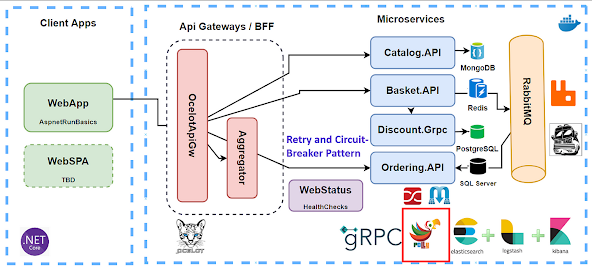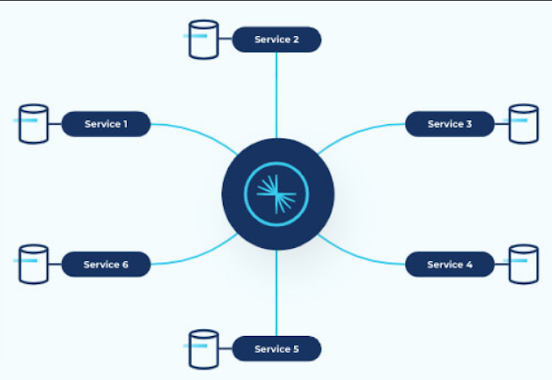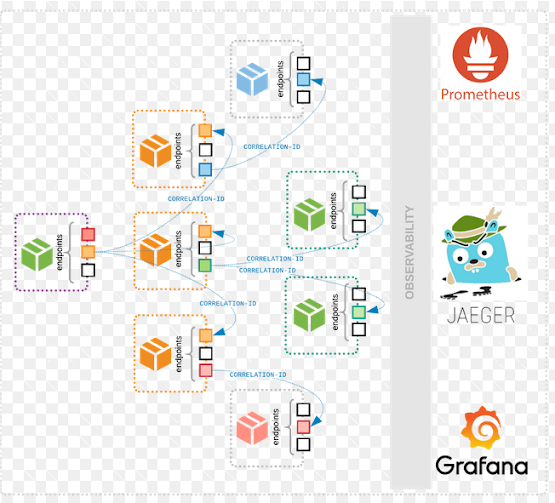Hello guys, today's world is about Microservices because Microservices goes
hand-in-hand with Cloud Computing. They are designed better to run on Cloud
Computing. Since all new Software development is most likely going to happen
cloud-native, it's important for developers to learn about Microservices,
particularly Java developers. To help with that, I have shared
best Microservices courses
and
books
in the past as well as
10 Microservices design patterns and in this article, I am going to share 10 common Microservices design
principles. If you are wondering what is difference between patterns and
principles?
Well, there is a subtle difference between them, principles are more granular and help in decision making while patterns are tried and tested solution of common Software problems, but both help with better software design.
The development of software applications has undergone a radical change thanks to the microservices design, which enables businesses to create scalable, adaptable, and maintainable systems.
The development of software applications has undergone a radical change thanks to the microservices design, which enables businesses to create scalable, adaptable, and maintainable systems.
Fundamentally, microservices promote the division of large programs into more manageable, independent services that can be created, deployed, and scaled independently.
However, adherence to specific design principles is essential to maximising the potential of microservices. The top 10 microservices design concepts will be discussed in this post, along with when to use each one for the best outcomes.
However, adherence to specific design principles is essential to maximising the potential of microservices. The top 10 microservices design concepts will be discussed in this post, along with when to use each one for the best outcomes.
What is Microservice Design Principles?
Microservice design principles are a set of guidelines and best practices for designing and developing microservices, which are small, independently deployable, and loosely coupled software components that work together to form a larger application.
These principles aim to help organizations build scalable, maintainable, and resilient microservices architectures. Here are some key microservice design principles:
- Single Responsibility Principle (SRP): Each microservice should have a single and well-defined responsibility. This helps keep the codebase focused and makes it easier to manage and evolve the microservice independently.
- Loose Coupling: Microservices should be loosely coupled, meaning they should have minimal dependencies on other services. This allows for independent development, testing, and deployment of services.
- Independently Deployable: Each microservice should be deployable independently of the others. This enables teams to release updates and bug fixes without affecting the entire system.
- API First: Design and document clear and stable APIs for your microservices. This enables other services and applications to interact with your microservices in a standardized way.
- Decentralized Data Management: Microservices should manage their own data, and data should not be shared directly between services. Instead, use APIs or event-driven communication to exchange information.
- Resilience and Fault Tolerance: Microservices should be designed to be resilient to failures. Implement retry mechanisms, circuit breakers, and graceful degradation to ensure that failures in one service do not cascade and disrupt the entire system.
- Scalability: Design microservices to be independently scalable. This means you can scale individual services based on their specific resource needs, rather than scaling the entire application monolithically.
- Event-Driven Communication: Use asynchronous event-driven communication patterns like publish-subscribe or message queues to decouple services and enable real-time or near-real-time interactions.
- Continuous Integration and Continuous Deployment (CI/CD): Implement CI/CD pipelines for each microservice to automate testing, integration, and deployment processes. This ensures rapid and reliable delivery of changes.
- Monitoring and Observability: Implement robust monitoring and logging solutions to gain insights into the health and performance of each microservice. This is crucial for debugging and optimizing your system.
- Security: Pay close attention to security at every level of your microservices architecture. Implement authentication, authorization, and encryption to protect data and prevent unauthorized access.
- Documentation: Maintain clear and up-to-date documentation for each microservice, including API documentation, deployment instructions, and usage guidelines. This helps developers understand how to use and interact with the services.
- Testing: Implement comprehensive testing strategies, including unit tests, integration tests, and end-to-end tests, to ensure the reliability and correctness of each microservice.
- Versioning: Use versioning for your APIs to ensure backward compatibility when making changes to microservice interfaces. This allows existing clients to continue functioning while new clients can use the updated version.
- Team Autonomy: Organize development teams around microservices, granting them autonomy and ownership over their respective services. This fosters a sense of responsibility and accountability.
These principles will help you design and build microservices that are agile, maintainable, and capable of supporting modern software development practices like DevOps and continuous delivery. However, it's important to adapt these principles to the specific needs and constraints of your organization and project.
In next section we will take a closer look of the top 10 Microservices design principles from this list and also see when to use them by looking at optimal use cases
10 Microservices Design Principles every Developer Should Learn
Here are the 10 common design principles you can learn to create better
Microservices architecture. They will also help you to work on existing
Microservice applications.
1. Single Responsibility Principle
The SRP states that a microservice should have a single and well-defined
responsibility. It ensures that each service focuses on a specific
business capability, allowing for easier maintenance, testing, and
independent scaling.
This principle is best suited for applications with
diverse functionalities, where each function can be handled by a separate
service.
Use Case
Use Case
A large e-commerce platform with modules like user authentication,
product management, order processing, and payment handling can benefit
from SRP by separating each module into individual microservices.
Use Case
Use Case or example
2. Loose Coupling
The emphasis of loose coupling is on reducing inter-microservice interdependence. This enables them to develop autonomously, fostering improved teamwork and system adaptability. Because one service's problems are less likely to have an impact on other services, reducing dependencies also reduces the chance of cascade failures.Use Case
Employing loose coupling guarantees that each team can build and
launch their services without waiting for others in complicated
business applications where multiple services are maintained by
different teams.
Use Case
3. High Cohesion
High cohesion suggests that each microservice should be focused on providing a set of closely related functionalities. By ensuring strong cohesion within each service, it becomes easier to maintain, test, and reason about the service's behavior.Use Case
A healthcare application can benefit from high cohesion by segregating
services for appointment scheduling, patient records, and billing,
thus maintaining clarity and efficiency within each service.
Use Case
4. Autonomous Decentralized Governance
Microservices must be governed independently to promote rapid development and deployment. By allowing individual teams to have the autonomy to make decisions about their services, development cycles can be expedited, fostering innovation and adaptability.Use Case
A dynamic content management platform with various content types
(e.g., articles, images, videos) can embrace autonomous governance to
enable faster content updates and new feature implementations.
Use Case
5. Resilience through Isolation
Resilience is critical for microservices to withstand failures. By isolating each service, failures in one service do not spread across the system, preventing a complete system outage. Isolation can be achieved through the use of containers or serverless computing.Use Case
A financial application handling transactions should isolate its
payment processing service to ensure that if one transaction fails,
others are not affected, preserving the system's reliability.
Use Case
6. API First Approach
Before putting the microservices into place, an API-first strategy entails creating and documenting the APIs. This procedure promotes improved teamwork and guarantees that services are created using well specified interfaces.Use Case
An API-first strategy enables frontend and backend developers to
collaborate simultaneously, accelerating the development of a
microservices-based travel booking system.
Use Case or example
7. Event-Driven Architecture
EDA promotes loose coupling and scalability by enabling services to communicate through events. Services publish events when certain actions occur, and other services interested in those events can respond accordingly. EDA facilitates real-time processing and enhances the system's overall responsiveness.Use Case or example
A logistics application that tracks the movement of packages can
utilize EDA to update the location of each package in real-time and
trigger notifications for relevant parties.
Use Case
8. Continuous Delivery and Deployment
Microservices encourage agile development practices, and continuous delivery and deployment are essential to realizing their benefits fully. By automating the process of building, testing, and deploying microservices, development teams can ensure rapid and reliable updates.Use Case
A software-as-a-service (SaaS) platform offering various features to
customers can utilize continuous deployment to swiftly roll out new
functionalities and bug fixes.
Use Case or example
9. Monitoring and Observability
Monitoring and observability are crucial for maintaining the health of microservices. Comprehensive logging, tracing, and metrics collection help identify performance bottlenecks and potential issues promptly, allowing teams to respond proactively.Use Case or example
A media streaming platform can employ monitoring and observability
tools to track user engagement, analyze service response times, and
optimize content delivery.
10. Scaling Strategies
Microservices demand dynamic scaling to handle varying workloads. By adopting horizontal scaling (adding more instances of a service) and vertical scaling (increasing resources for a service), the system can efficiently manage fluctuations in demand.Use Case or example
An online gaming platform that experiences heavy traffic during peak
hours can implement auto-scaling to ensure seamless user experiences
during high load periods.
Conclusion
That's all about 10 essential Microservices design principles for developers. Microservices have transformed the software development landscape, and their success hinges on adhering to fundamental design principles.
By understanding and applying these top 10 microservices design
principles in appropriate use cases, organizations can build robust,
scalable, and maintainable systems that meet the ever-evolving demands
of modern applications. However, it is essential to consider the
unique requirements and complexities of each project to determine
which principles will yield the best outcomes.
I hope this comprehensive article; will help you follow along the best design principles and their optimal uses in software development life cycle.
I hope this comprehensive article; will help you follow along the best design principles and their optimal uses in software development life cycle.
We support their use cases by collecting examples from various IT
industries to give you a better idea, we showed you how stable and
renowned IT solutions use it for their productivity.
Learning the design principles might take a bit more time in the
beginning but once you get used to it. I am sure it bring more and
more success to your firm or team.
If you are to pursue your career in software architecture, I highly recommend investing time in further learning from renowned books and utilizing online resources. The field of software architecture is constantly evolving, and staying up-to-date with the latest trends, best practices, and architectural patterns is crucial to becoming a successful software architect.
If you are to pursue your career in software architecture, I highly recommend investing time in further learning from renowned books and utilizing online resources. The field of software architecture is constantly evolving, and staying up-to-date with the latest trends, best practices, and architectural patterns is crucial to becoming a successful software architect.
Other Java Microservices articles and tutorials you may like:
- 15 Microservice Interview Question and Answers
- How to create Microservice with Java and Spring
- 10 Free Courses to learn Spring for Beginners
- Top 5 Courses to learn Microservice with Spring Boot
- 5 Free Spring Framework Courses for Java Developers
- 5 Best Courses to learn Spring MVC for Beginners
- 5 Online Courses to learn Core Java for Free
- 5 Books to learn Microservice in Java
- 10 courses for Programming/Coding Job Interviews
- 5 Essential Skills to Crack Coding Interviews
- 10 Advanced Spring Boot Courses for Java Programmers
- 5 Courses to Learn Big Data and Apache Spark
- 10 Best Courses to learn Spring in-depth
- 10 Free Spring Boot Tutorials and Courses for Java Devs
- 5 Essential Frameworks Every Java developer should learn
- Top 5 Java design patterns courses for experienced Java devs
Thanks for reading this article so far. If you like this list of best Microservices design principles then please share them with your friends and colleagues. If you have any questions, feedback, or other fee courses to add to this list, please feel free to suggest.
P. S. - If
you are new to Microservice architecture and want to learn more about Microservice Architecture and solutions
from scratch and looking for free resources then I highly recommend you
to check out my post about 7 free Microservice courses. It contains free Udemy and Coursera and courses to learn Microservice architecture from scratch.











No comments:
Post a Comment
Feel free to comment, ask questions if you have any doubt.